Eight Quaker Artists on the Healing Power of Art
Hope inside of dismal times can be a slippery force. How do people cling fast to life, even when their wells run dry? I spent time with several Quaker artists, asking them about their art and spiritual practice during the pandemic. People told of creative projects that helped them grieve internally, combat homophobia, mourn the losses of climate change, and unite with their higher power. The common thread I found among these Friends was an ability to transform grief or fear into beauty. I realized that, more than discussing art, we were discussing resilience.
“Art can help us dive into our hard feelings of pain and despair in the world.” These words are from Kristina Keefe-Perry, who is a host of Three Rivers Meeting, which is under the care of Fresh Pond Meeting in Cambridge, Massachusetts. Kristina explained that many people carry “disenfranchised grief” from losses during the pandemic. This includes “grief at the loss of what we know” and the grief of missed opportunities. At the same time, Kristina said, “elements of beauty can help us connect.”
Kristina and many other artistic Friends described how sculpting, singing, dance, and worship can help people process grief. As many Friends continue to take stock of what they have lost, these stories from Quaker artists may light the way.
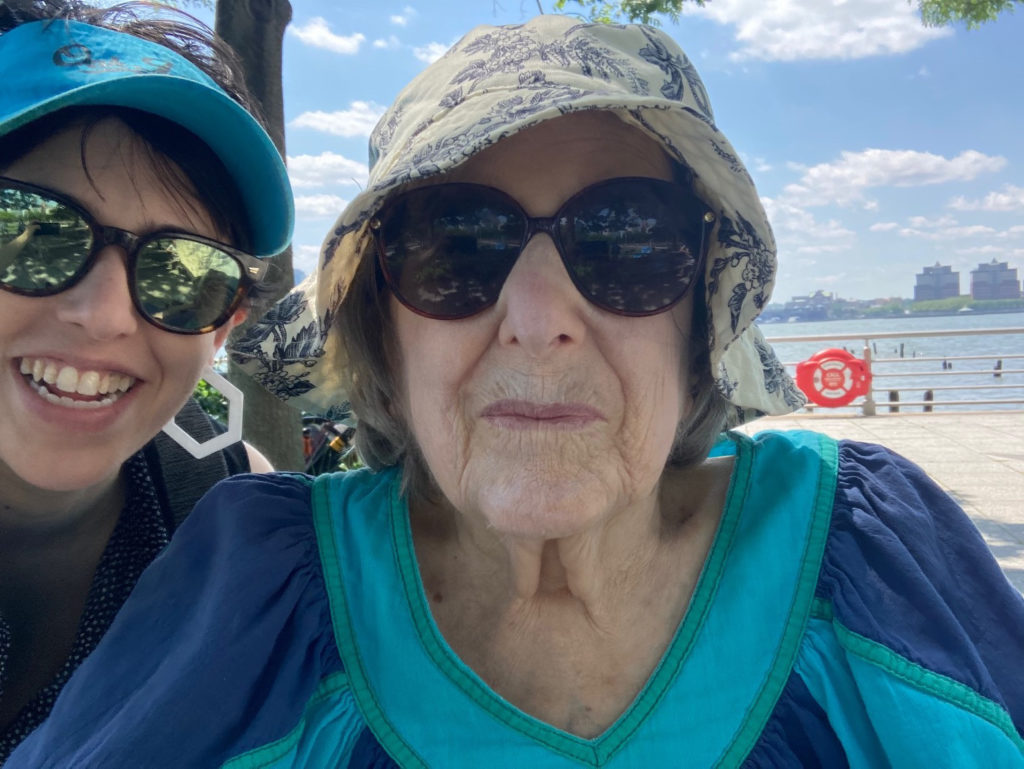
Emily Savin and her grandmother, Big Lucy, hold a close intergenerational bond. Here, they enjoy sunshine by the Hudson River. Emily is also a host of Three Rivers Worship, a group that is reclaiming and reinventing Quaker practice for current times. Photo from Emily Savin.
http://www.threeriversmeeting.org/hosts
Art as a Lifeline
Art can be a lifeline during uncertain times. In July of 2020, when many people were avoiding hospitals, Emily Savin found herself waiting with her grandmother in a New York City intensive care unit. Her grandmother Big Lucy, 99, had fallen and broken her hip. “She was either going to stabilize enough for hip surgery, or she was going to die,” Emily explained.
Emily, who is also a host of Three Rivers worship community, watched Big Lucy drift in and out of consciousness. “She didn’t know where she was. When she was conscious, she was agitated and scared.” Emily was scared, too. Reaching for a calm place, Emily began to sing.
“I felt very powerless,” Emily explained, “and singing was something I could sort of grab onto.” To her surprise, a hospital employee joined her in song. Their voices made a harmony. “I had so missed that feeling of harmony in my body!” she said. “I hadn’t sung with anyone for several months. I will never forget that moment.”
Emily’s song brought a jet-bolt of hope into the room. In time, her grandmother did recover. Big Lucy is now 101; she and Emily live together in Greenwich Village.
In that same month, a continent away, another Friend was inspired to make art during bleak times. Alice Grendon, a performance artist and member of Mt. Toby (Mass.) Meeting, was living among West Coast wildfires. While Emily was waiting in a hospital, Alice waited in a house with the windows closed. “The sky was orange in the middle of the day,” Alice said. “It was apocalyptic.” Inside such a jarring environment, art became a lifeline. Alice affirmed: “Our society treats art as if it’s a luxury. It’s not a luxury! Art is necessary.”
Mourning the lives and land lost to fire, Alice processed that grief through movement. That is how Imaginal Cells, a dance piece on film, was born. Alice’s dance explores destruction, creation, and imagination. One scene includes a view from outside, in which Alice’s body is framed by a window and a blooming rose. In order to capture that scene, Alice said, the cinematographer wore a gas mask.
Imaginal Cells was featured in a climate showcase last June. “To create is an inherently hopeful act,” Alice explained. “It’s an investment in the future. It is a testament to the human spirit.” Although facing climate change may bring feelings of powerlessness for some Friends, Alice’s dance emits a sense of hope and agency.
Left: Alice Grendon of Mt. Toby (Mass.) Meeting reads aloud this poem, which focuses on racial justice in a time of racist brutality. Alice asserts that no matter who someone is, what their race, or how they vote, they are linked by six degrees to Brianna Taylor – and “to the officer who killed her.” Friends can hear the poem online by visiting Six Degrees of Separation. Right: Imaginal Cells, a performance piece on climate change and new birth, was featured in a climate showcase last June. Alice is a member of Mt. Toby (Mass.) Meeting, currently sojourning in South Salish Worship Group in Washington.
Art That Anchors
Art can anchor us in times of change, helping us make sense of the world. At times, it can bring us comfort. In that same month that Emily and Alice waited, I found myself in a tangle of grief. I was facing several losses, and I felt worn out. One morning, I sat down in prayer and asked for help. “I don’t even have the energy to center down,” I prayed, “but God, if you have some comfort, I really could use it now.”
A few words trickled up from the depths. “Now listen,” the voice said. “All of your fears rest in God. Giving your fears over to God takes renewal; it takes commitment.” I was being invited to trust the Source to carry me. The words trickled into a river, giving me strength when I needed it most. I carried the message with me throughout the day.
I asked Tony Martin from Roanoke (Va.) Meeting if he would create a melody for the words. Tony made a song, “What I Hear Inside My Breath,” which draws from the message that I had received. The song encourages faithful waiting even in times of pain. It felt much like a mantra to me, carrying me through that time.
Two years later, I asked Tony how the song-making felt to him. “Making that song was such fun!” he exclaimed. He explained that when he makes a melody, he sings it again and again. “And that happened with the words from you. I tried a lot of variations. I sang it all the time, for weeks. That song became a kind of mantra for me.” I smiled to hear him describe it that way.
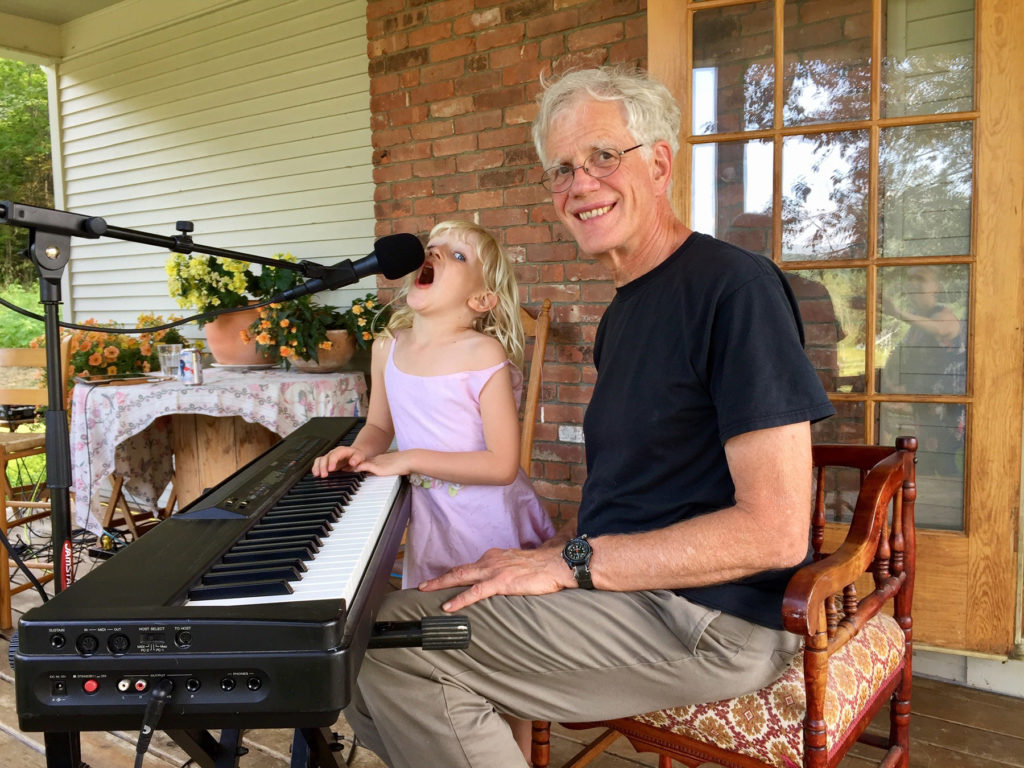
Tony Martin of Roanoke (Va.) Friends Meeting sings on the porch with his granddaughter. Tony created the melody for the song “What I Hear Inside My Breath,” and Johanna Jackson of Upper Susquehanna (Pa.) Quarter created the words. The song, written in July of 2020, encourages faithful waiting in times of pain. The song is available at forwardinfaithfulness.org/songs.
Art That Connects
Jayden HC Sampson, an African American transman and convinced Friend from Norristown (Pa.) Meeting, has a gift for melody. In January 2021, Jayden attended an online workshop on chanting sponsored by Pendle Hill, a study and retreat center in Wallingford, Pennsylvania. There he met Paulette Meier and Tony Martin, who were hosting the workshop. In the breaks between workshop sessions, Jayden felt inspired to create chants and songs.
Many of Jayden’s chants celebrate courage, truth, and beauty. They hearken back to his childhood; as a young person, Jayden attended an African Methodist Episcopal Church (AME). “While I enjoy being a Quaker,” Jayden said, “I do miss gospel music.” One of the chants from that weekend, “Healing Power,” has a particular gospel feel.
When Tony heard “Healing Power,” he was moved to add his voice into the mix. From several states away, Tony made a harmony. Later, in writing this article, I added my voice as well.
Hearing the song grow, Jayden said, “was like looking at color evolve in song . . . like tasting flavors in a recipe.” The contributions from more voices seemed to complete the original song. Jayden offered a proverb to describe the process: “While many people say ‘Many hands make light work,’ in the case of this song, many hands make for beautiful work.” The voices each add beauty.

Jayden HC Sampson of Norristown (Pa.) Meeting wrote “Healing Power” in January of 2021. The chant came together during a Pendle Hill workshop, “Chanting as a Spiritual Practice for Friends,” which was led by Tony Martin and Paulette Meier. Tony added his voice to the song during that weekend. Later, other Friends and family joined in, including children. In 2022, Johanna Jackson added her voice as well. The song is available at forwardinfaithfulness.org/songs.
Art That Repents
Friends seemed to find ways to thrive and collaborate during this challenging time. Some people shared the lessons they learned while creating. Ben Bootsma, resident Friend-manager at Toronto (Ont.) Meeting, is also a videographer. During the pandemic, he gathered portraits and sunsets in Toronto. He paired this footage with a song that had arrived in the middle of the night, like a message.
Ben said that the idea of filming portraits and sunsets came to him after his missing what felt like an important nudge one morning. He had been preparing for a canoe trip, and was feeling a bit groggy. Just as he was heading out the door, Ben heard a voice inside that said: “You’re going to want to bring your camera.” Noting the rainy day and his sleepiness, Ben declined.
As soon as their canoe hit the water, though, the rain parted. What followed was the most glorious, unstoppable, surprising river scene that Ben had ever seen.
We got within two feet of this huge sandhill crane, and I could see the sunlight glinting off of its eye! The mallards were coming by, and I could see their iridescent feathers. Everywhere, around every corner, there was something really interesting. And of course, I’m noticing all of this because I don’t have my camera.
Walking on shore, Ben found a crowd gathered near a dam. The crowd was cheering each time that a salmon managed to jump the dam. Each time he looked, a fish made it over the dam. At the end of the day to cap it all off, a full rainbow arched beautifully over the scene.
Contritely, Ben asked for another chance. He went out on a second day. After spending an afternoon searching for something to film, Ben heard that same inner voice pipe up. This time it said: “Portraits and sunsets. That’s what you’ve got to do instead.”
This time, Ben obeyed. He biked through Toronto with his Super8 camera and gathered portraits. In the evening, he would look for a sunset. Gathering portraits, in turn, reunited him with many people he hadn’t seen during lockdowns.
The video, “This World Was Over Long Ago,” includes snapshots of his friends, family, and meeting members. Watching it, I couldn’t help but notice how people’s faces looked innocent and open; these days, one rarely sees these qualities in adults. I asked Ben how he captured such intimacy. For each portrait, Ben said, he recited a passage from the Bible.
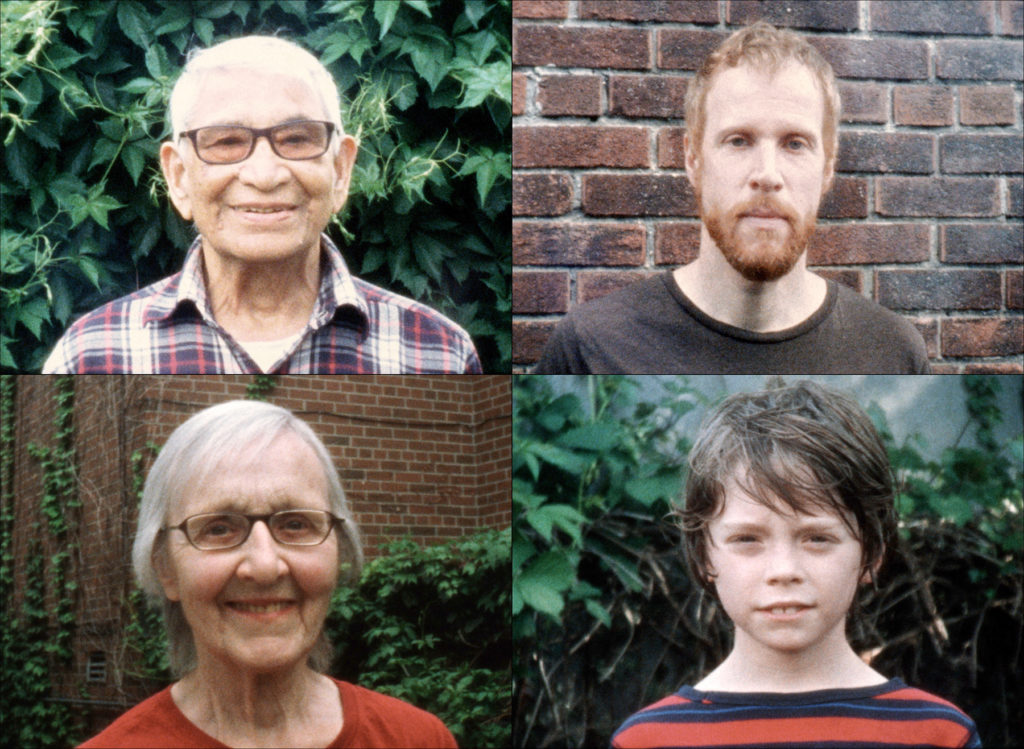
Ben Bootsma of Toronto Meeting gathered portraits of family members, friends, and members of his meeting for a short film, “This World Was Over Long Ago.” (Ben is on the top right.) The film alternates portraits and sunsets, focusing on the temporary nature of all things visible. The film is available to view online at benbootsma.com.
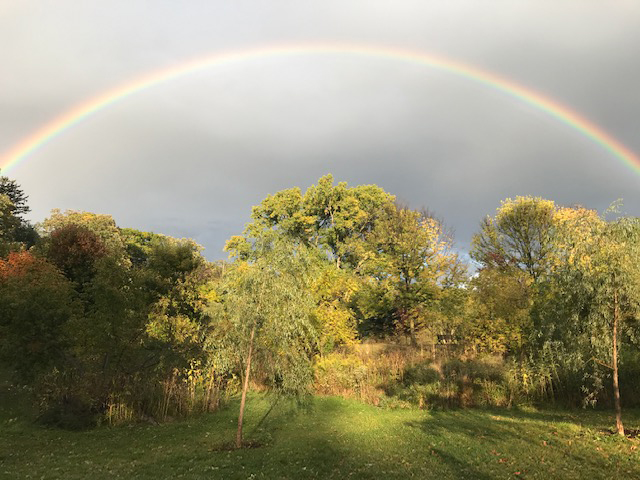
Ben Bootsma of Toronto Monthly Meeting and Johanna Jackson of Upper Susquehanna (Pa.) Quarter collaborated to create “May the Light.” The sweet, tender song arose from worship. It is a call to live into one’s witness. The song is available at forwardinfaithfulness.org/songs.
Art and a Reckoning
Spiritual practices such as art can bring us to contend with difficult truths, like realizing one has missed an opportunity. They can also bring us to imagine a new future and reckon with the past. In June of 2022, Jessica Arends, a queer visual artist from Adelphi (Md.) Meeting, found herself making a giant puppet. Made of cardboard, bamboo, two sheets, and several layers of acrylic, the puppet stood 12-feet tall and showed a Quaker from the 1600s. She carried it to the Pride Parade in Washington, D.C., where she joined with other Friends from Adelphi Meeting. It took three Friends to carry this Quaker puppet: one for the head, two for the hands!
As the group rounded a corner, they found “hundreds and hundreds of people, packed together,” watching the parade. Onlookers lifted their faces and beamed. People cheered,”Yay Quakers!” or “I love Philadelphia!” (They also let out the inevitable, “I love your oatmeal!”) A group of teenagers surprised the Adelphi Friends by chanting “Walk in the Light. . . . Walk in the Light!” as the puppet passed by.
Jessica reported:
People recognized who we were, as Quakers. It was amazing! There was so much excitement, so much cheering, and so much joy. People were busting out their phones, trying to get a picture of this puppet.
Jessica’s art brought visibility and energy to her community. It is also possible that it may not be used again. In the process of writing this article, Jessica and I learned that the historical figure she had chosen, William Penn, was also an enslaver. Some of Penn’s most famous words –“Let us see what Love can do” – run completely counter to the reality of role he played in maintaining and profiting from chattel slavery.
Many Friends are beginning to change how they tell the story of William Penn. In the last two years, the Friends House in London and the Friends Committee on National Legislation (FCNL) have scrubbed Penn’s name from their buildings and rooms. Perhaps in time, more Quaker art – including architecture, puppets, storytelling, and paintings – will change as well.
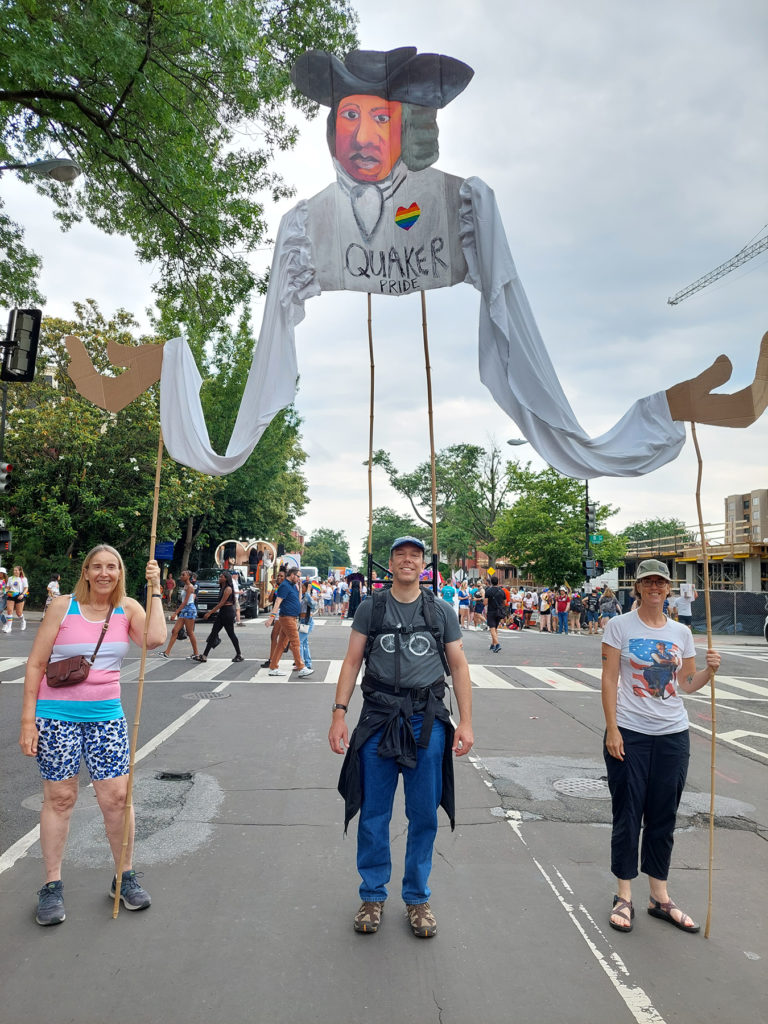
Chloe Schwenke, Andrei Israel, and Jessica Arends carried this giant puppet in the Washington, D.C. Pride Parade. They marched with Christina Lucas, who took this photo. All four Friends are attenders at Adelphi Meeting in Maryland..
Art That Offers Solace
Art can uplift us, and it can also renew us, slowly and quietly in the recesses of our hearts. In late March 2020, when I was sick with COVID, I struggled with being apart from other people. At that time, no one was quite sure how long a person was contagious, so I experienced an extended quarantine.
“I’ve begun to believe that my breath is poisonous,” I told a Friend at the time. Hungry for human society, I reached for art to fill the void. When I had enough energy to sit up, I wrote a poem. Later, I sat at my desk and worked with acrylic paints. The images and words started coming together; I realized that I was making a book.
The book, Turning Grief Into Power, is a story about transformation and loss during the pandemic. In making it, I drew meaning out of distressing times. One page says, “Our grief unites us.” The book’s simple language, along with textures and shapes, illustrated something that I found difficult to convey.
Across the world, many people were contending with isolation. Betty Namalwa, the daughter of farmers, faced the terrors of the pandemic from her home near Nairobi, Kenya, where she was raising a young son. Betty learned to embroider during the pandemic, with classes from Advocacy Project. The Advocacy Project helps people in marginalized communities to tell their stories.
Working in social-distance circles, Betty and the other women artists found ways to heal and connect. According to Advocacy Project, these classes offered a critical creative outlet after the stress of lockdowns. Betty stitched two quilt squares: one to show the hunger that had spread in her community during lockdowns, and another that shows a water buffalo. She released the second square to a quilter in the Global North.
Jessica Arends, the puppet-maker, received Betty’s quilt square at her home in Maryland. “While in isolation,” Jessica said, “I was entrusted with a block that a woman across the world had embroidered.” The fabric connected her to Betty and to the wider story of empowerment. Jessica designed a quilt to match Betty’s square. Their quilt, with 38 others, sold at an auction. All together, the quilts raised over $12,000 for community action in Nairobi.
Left: “I am 22 years, mother to a son, and born of a family of six.” Betty Namalwa shows the quilt square that she embroidered during the pandemic. She worked with 28 other sister artists to create vivid embroidery designs of animals native to Kenya. Photo from The Advocacy Project (https://www.advocacynet.org/sister-artists-kenya/). Right: Jessica Arends of Adelphi (Md.) Meeting visits the George Washington University Museum in Washington, D.C., where the quilt she made with Betty Namalwa was on display. Women in the Global North and South collaborated to make 39 quilts, raising $12,000 in sales. The money supports women, mostly mothers, who live in two settlements in Kenya.
Art as a Blessing
Art can heal; it can offer us a lifeline and an anchor; it can express some of the resilience of the human spirit. When I need an anchor, I often reach for a song that Ben Bootsma and I made together in 2019. “May the Light” rose from an experience in worship, which carried part of the tune. Some of its words have taken on new meaning since the pandemic lockdowns. One verse describes how beauty and energy can unfold amidst fatigue:
May you find power inside
the witness of your heart.
We can change the way
we choose to live apart.
We see the beauty
of our souls now overflow,
washing hearts of weary
travelers on the road.
When I sing these words, I remember that I am both a weary traveler and a creator of beauty. And, I would say, perhaps we all are. Like Alice, sharing a powerful witness, we each have a voice that is precious. Like Jayden and Tony singing in harmony across state lines, we can create beauty out of fragmented times. Like Ben, biking across Toronto, we can change the way that we “live apart,” whether that apartness comes from quarantine, political division, or conflict. Like Jessica and Betty, collaborating across cultures, and like Emily, who found grounding in a time of distress, we can access the healing power of art.
As we heal, may we gain strength from the Great Creator. Art is not a luxury; it is necessary!


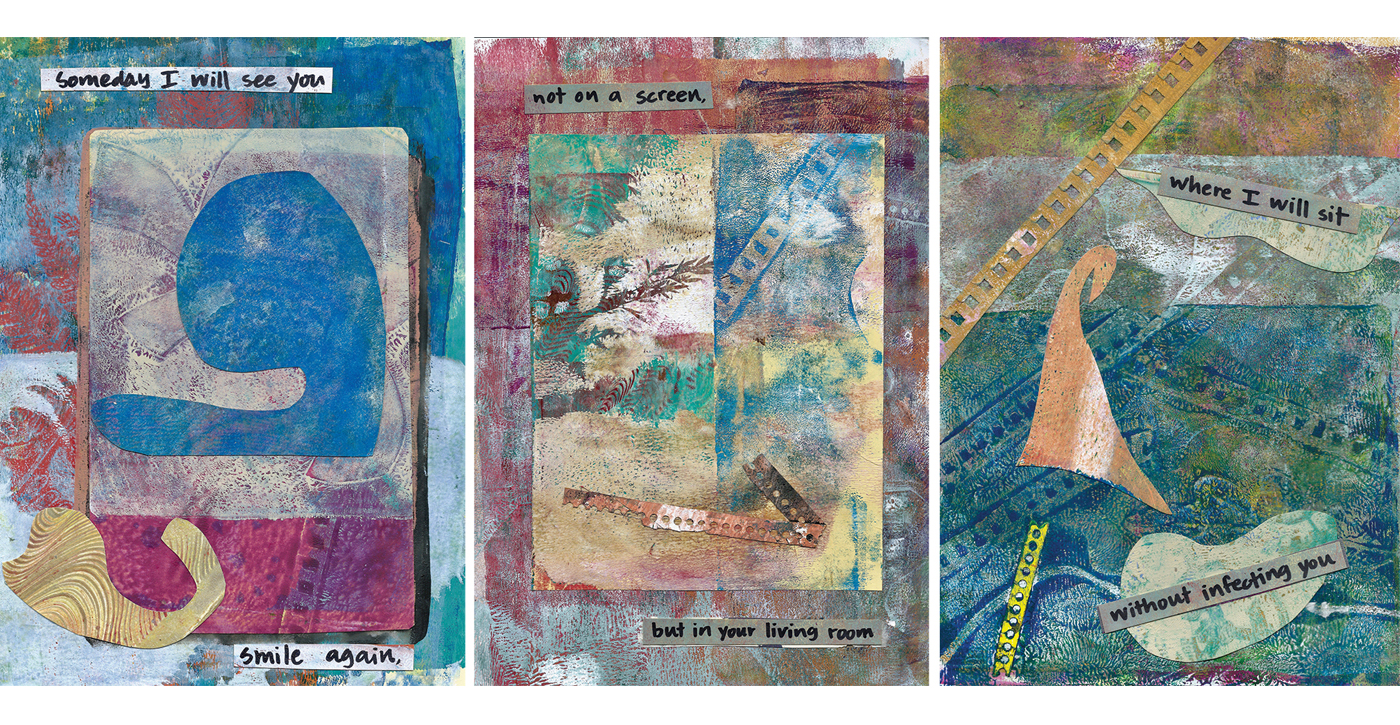




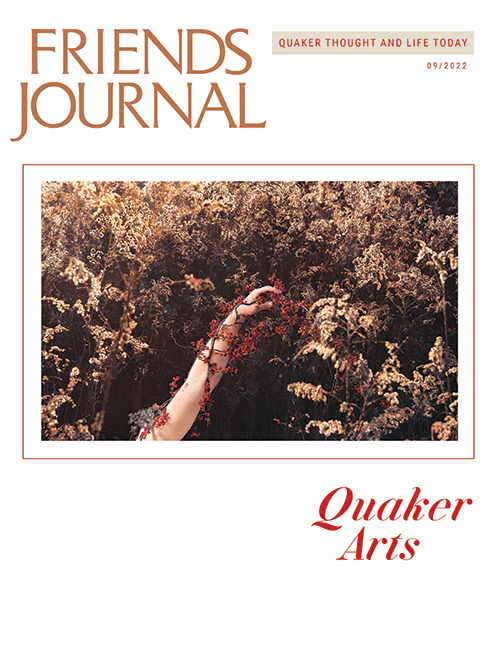
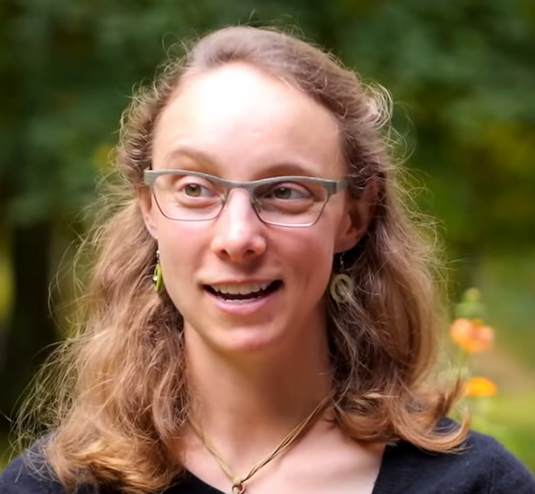
I appreciate the beauty in this article…. the beauty of the artwork, and the stories, and the words. It is a powerful reminder to me to make space in my days for creating and for noticing. While reading the article I cried a few times…a sure sign that it connected with my spirit.
Thank you Johanna, for helping us to understand that, though art is not a luxury, it is so lusciously luxurious to weary souls.